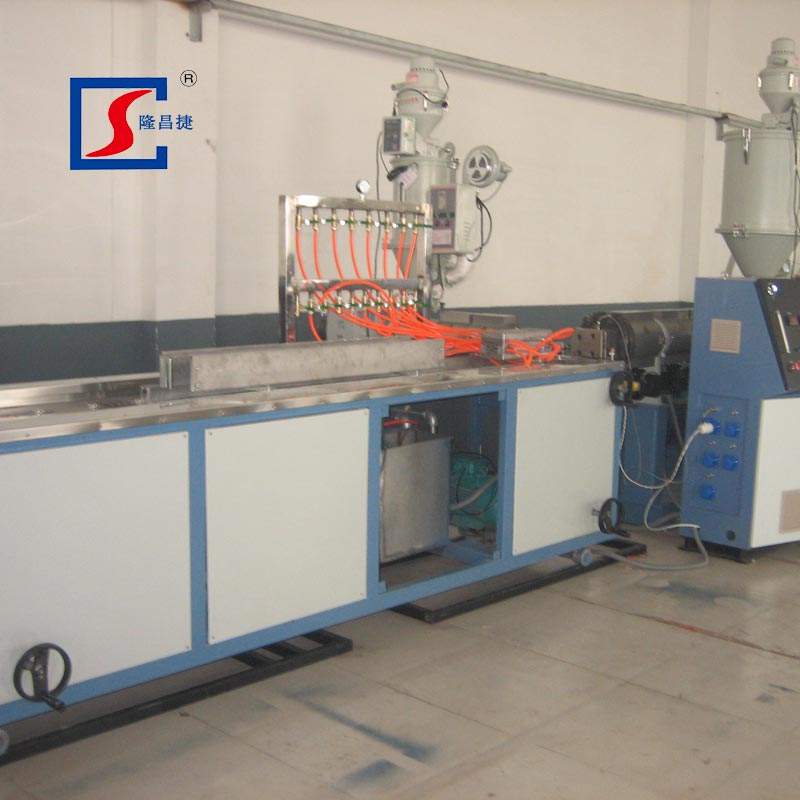The Power of Profile Production Lines: Boosting Efficiency and Precision in Manufacturing
2025-06-18
In today’s competitive industrial landscape, manufacturing efficiency, precision, and consistency are more critical than ever. From automotive parts to architectural components, profile production lines have become an indispensable part of modern manufacturing. These automated systems are designed to produce high-quality profiles at scale, helping businesses meet demanding market needs.
So, what exactly is a profile production line, and how does it enhance manufacturing processes? In this blog, we’ll explore the core components, advantages, and applications of profile production lines, along with why they are essential for companies looking to stay competitive.

What is a Profile Production Line?
A profile production line is a specialized manufacturing system designed to produce profiles—the long, continuous shapes used in a wide range of products and industries. These profiles can be made from various materials such as aluminum, steel, plastic, or PVC, depending on the application.
The profiles produced by these lines can be simple or complex in shape, and are typically used as structural or functional components. The production process involves shaping raw material (usually through extrusion, roll forming, or other methods), cutting, and sometimes finishing the profile to the required specifications.
Profile production lines are highly versatile and can produce an array of profiles, such as:
Window and door frames (often made of aluminum or PVC)
Automotive components (bumpers, trim, and structural profiles)
Architectural profiles (metal roofing, wall cladding, etc.)
Industrial profiles (rails, beams, and channels)
Electrical and communication conduits (PVC or aluminum profiles)
Key Components of a Profile Production Line
A profile production line typically consists of several interconnected machines, each serving a specific function. While the exact configuration can vary depending on the type of profile and material being produced, the core components generally include:
1. Raw Material Feeding System
This part of the system is responsible for feeding the raw material into the production line.
Depending on the material, it could involve feeding aluminum billets, steel coils, plastic pellets, or PVC resin.
2. Extruder or Roll Forming Machine
Extrusion is one of the most common methods used for creating profiles, especially for plastics and metals. In this process, raw material is heated and forced through a mold or die to create the desired shape.
Roll forming is another popular method, typically used for metal profiles. In this process, a coil of metal is continuously passed through a series of rollers to form the desired profile.
3. Cooling System
After the material is shaped, it needs to cool down to harden and stabilize. Cooling systems typically use air or water to bring the temperature of the profiles down to room temperature.
4. Cutting and Length Adjustment
After the profiles have cooled, they are cut into specific lengths based on customer specifications. This is typically done using automated cutting machines that can handle high-speed production and ensure precise measurements.
5. Finishing and Surface Treatment
Depending on the application, profiles may need additional finishing processes like sanding, polishing, painting, or coating. These processes ensure that the profiles meet the necessary aesthetic and functional requirements, such as weather resistance, strength, or appearance.
6. Packaging and Storage
Once the profiles are completed, they are packed for shipment or stored for later use. Automated stacking and packaging systems ensure the profiles are carefully handled and prepared for transport.
Benefits of Using a Profile Production Line
1. High Efficiency and Speed
Profile production lines are designed for continuous operation, allowing for high-volume production with minimal downtime. Automation streamlines the entire process, improving speed without sacrificing quality.
2. Precision and Consistency
Automated production lines ensure that every profile produced meets strict quality standards. The machines work with high precision to produce profiles with exact dimensions and finishes, reducing the margin for error that could occur with manual processes.
3. Cost-Effective Production
By automating the process, businesses can reduce labor costs and material waste. A profile production line also helps to minimize human errors and inefficiencies, further driving down production costs.
4. Customization and Flexibility
Profile production lines can be easily adjusted to produce different shapes, sizes, and materials. This flexibility allows manufacturers to cater to a wide variety of industries and meet diverse customer needs.
5. Energy Efficiency
Modern profile production lines are designed with energy-efficient technology that reduces energy consumption without compromising production capacity.
Applications of Profile Production Lines
The versatility of profile production lines means they are used in numerous industries, including:
1. Construction and Architecture
In the construction industry, aluminum, steel, and PVC profiles are widely used for windows, doors, curtain walls, and roofing systems. These profiles are designed to withstand the elements while contributing to the overall aesthetic of a building.
2. Automotive Manufacturing
Automotive parts such as bumpers, trim pieces, and frame components are often made from extruded or roll-formed profiles. The use of high-strength profiles ensures that these parts are both lightweight and durable.
3. Furniture Production
Metal profiles are frequently used in the production of furniture frames, shelves, and decorative elements. The high precision of a profile production line ensures that the furniture components fit together perfectly and have a uniform finish.
4. Electronics and Electrical Conduits
Profile production lines also manufacture profiles used in cable conduits, electrical panels, and component housing. These profiles need to meet stringent standards for durability and safety.
5. Packaging Industry
Certain types of profiles are used in protective packaging and shipping containers, ensuring that delicate items are safely transported.
Why Invest in a Profile Production Line?
For manufacturers looking to optimize their operations, a profile production line offers an excellent return on investment. Here are a few reasons to consider integrating one into your production process:
Scalability: As demand for your products increases, the production line can be easily scaled to meet higher output requirements.
Automation: By automating the production process, you can reduce the need for manual labor, minimize human error, and improve overall efficiency.
Quality Assurance: With automated control systems, profile production lines ensure a high level of consistency and quality in every batch produced.
Competitive Edge: By investing in state-of-the-art production technology, your business can maintain a competitive edge in the market with fast turnaround times and superior products.
Profile production lines are essential for industries that rely on precision-engineered profiles to create a wide range of products, from construction materials to automotive parts. By integrating automated production lines into your manufacturing process, you can improve efficiency, reduce costs, and ensure high-quality output. Whether you’re producing aluminum frames, steel beams, or PVC conduits, a profile production line provides the tools necessary to scale and succeed in today’s competitive market.
If you’re considering adding a profile production line to your operations, be sure to partner with a supplier that understands your needs and can provide customized solutions tailored to your business.


